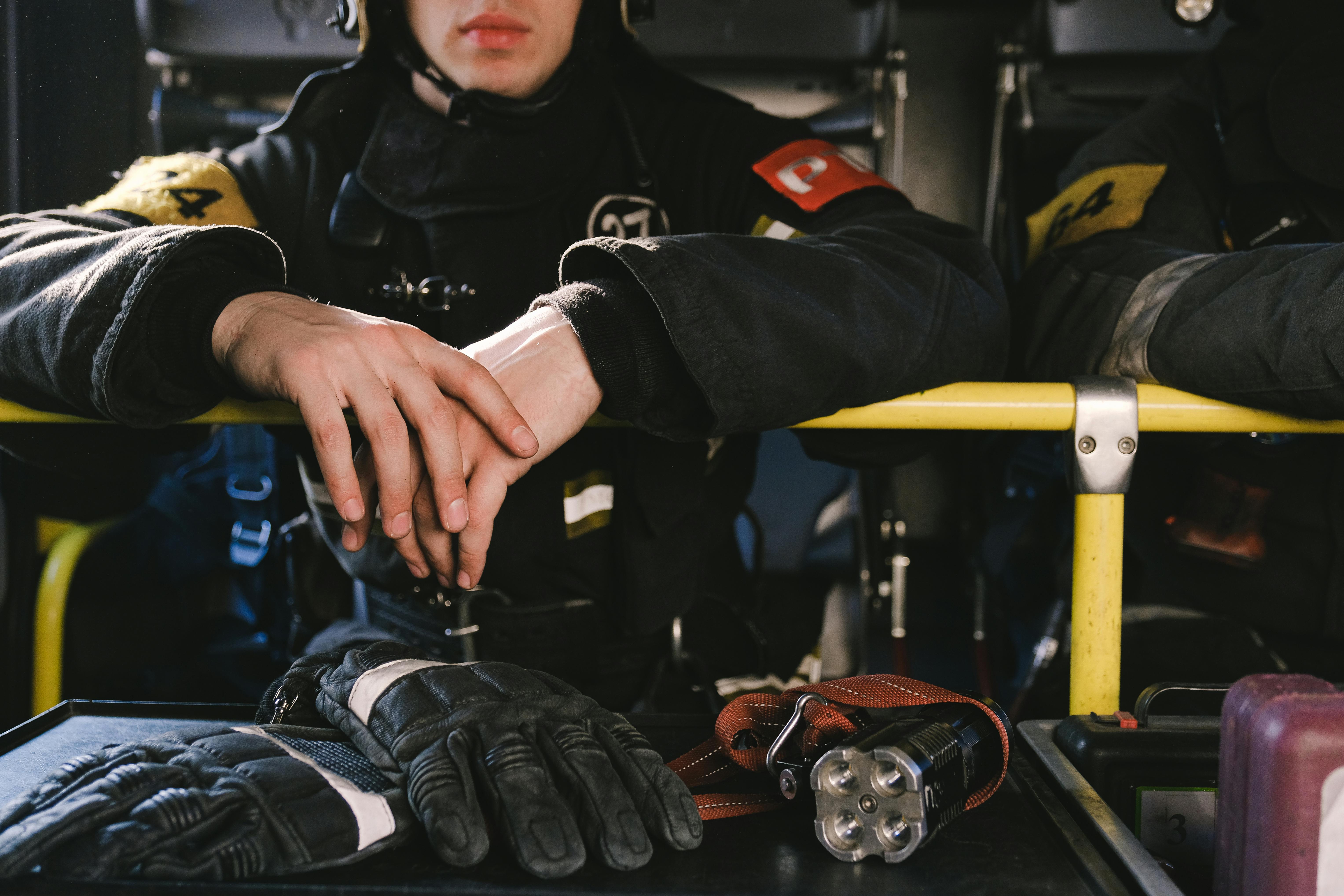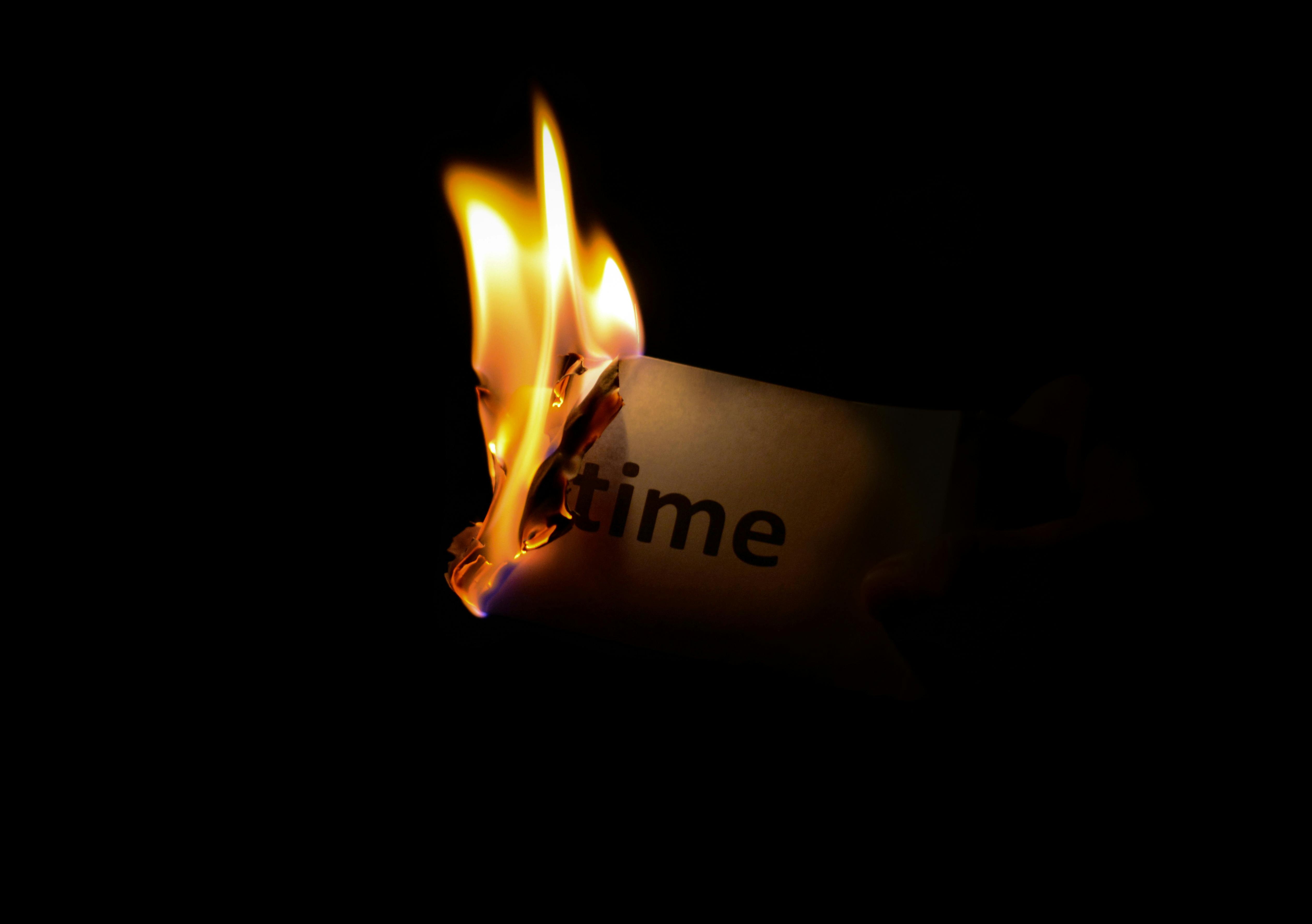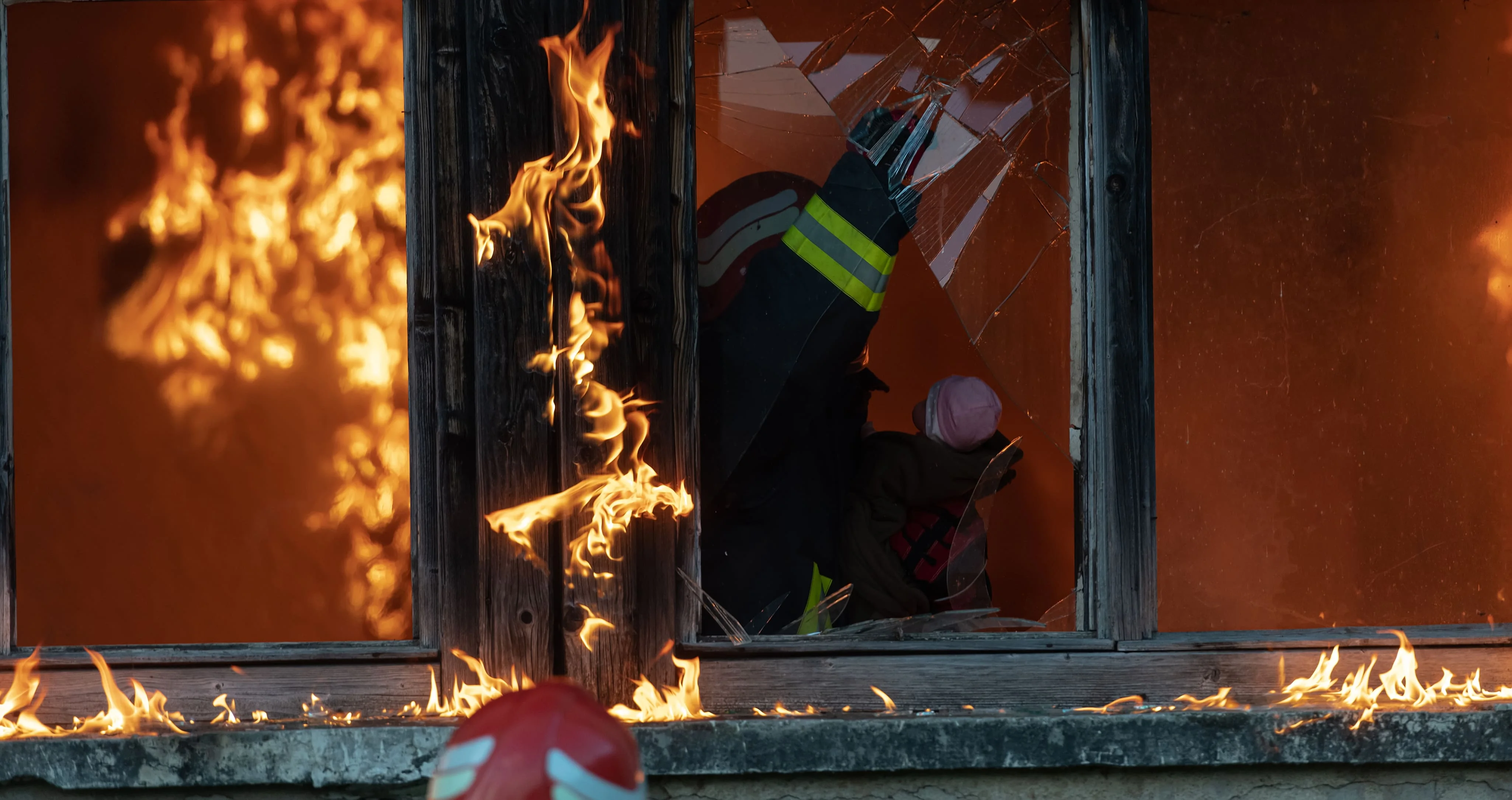The Comprehensive Guide to Origin and Cause Investigations: Unraveling the Mysteries of Fire


Origin and cause investigations hold all the details of how and why a fire started. Fire investigators use a scientific and analytical thought process to assess the scene of a fire, collect evidence, analyze the findings, and form hypotheses and conclusions based on these results. This is a scientific field where complexities and challenges are faced every day.
A fire investigator is a truth seeker who must adhere to legal, ethical, and scientific standards. Origin and cause fire investigation is a challenging field, but for those who love the thrill of solving puzzles and appreciate the sense of purpose from helping others, it’s a field that’s ripe with possibilities.

Table of Contents
- When there’s a fire, the origin and cause need to be determined. Origin and cause investigations reveal the “why and how” behind a fire, and are important for aiding in insurance claims and legal proceedings, along with providing key information for future prevention efforts.
- The primary components of an origin and cause investigation include a thorough examination of the scene, evidence collection, and scientific analysis.
- Qualified fire workers, called fire investigators, are the professionals who perform these investigations. They are specially trained to adhere to legal and ethical standards, ensuring that their findings and evidence collected are seen as credible and admissible.
- We’re seeing amazing emerging technologies, along with collaborations among key stakeholders, that are driving advancements in the field. As a result, the field is able to improve its understanding of fire science and see an overall improvement in investigative techniques.
We can think of an origin and cause report as being the spine of a fire investigation. It’s a report that outlines, in intricate detail, the factors believed to be at the root of a fire. This includes answering the “what”, “when”, “where”, and “how” questions of a fire investigation. A root cause investigation does more than pinpoint exactly where the fire started and the immediate contributing factors. It can also go deeper, and outline a trail of events that led to the incident.
This official report is crucial for multiple reasons. In the event of a fire, there is frequently an insurance claim that will be filed. An origin and cause report is non-biased so that it accurately represents the causative details of a fire, which may benefit either the claimant or the insurance company, depending on the circumstance.
In some cases, the suspected cause of a fire can lead to legal proceedings. In this case, an accurate, detailed report can serve as admissible evidence in court.
The importance of an origin and cause report demands that it be built with an organized structure, clear and concise writing, and follow legal guidelines and best practices. It should contain information relating to the incident description, details of the scene examination, and pertinent background information, followed by an analysis of the findings and a conclusion.
This is a great deal of information to communicate, and the person writing the report must also take into consideration the terminology and technical level of their writing. Not everyone who will read the report will be an expert in fire science or fire investigation. In other words, there needs to be a balance between technical terminology and relatable layman’s terms.

Report Structure and Contents
It’s critical that a fire investigator record all their findings during a cause and origin investigation, and that they’re able to record the information in a clear and concise manner that follows guidelines and best practices. The structure and content of the origin and cause report are key for delivering information in the most concise and clearest way.
The contents of every origin and cause report should include a brief introduction to the incident, background information, and a detailed description of the incident (including who may have been at the scene, witness reports, and findings from the scene examination). This is then followed by an analysis of the findings, a conclusion, and finally, a recommendation based on the findings.
Developing the skills to write a thorough and concise investigation report is a key part of a fire investigator’s responsibilities. Professional courses are available to help you develop these skills, and the good news is that most of them require a minimum time commitment. For example, this origin and cause course lists the details as “approximate reading time: 1 hour”, and “approximate online time: 1 hour”. It doesn't get much more convenient than that.
Report Writing Guidelines
An origin and cause report is a single document that fills multiple needs. It’s extremely important that fire investigators are able to compose high-quality origin and cause reports that can meet the needs of the different industries (insurance, law, etc) that rely on them.
This means that an origin and cause report must include sufficient supporting evidence that backs up the conclusion and suggested recommendations. All of the information contained within also needs to meet the guidelines for being defensible in both legal and regulatory contexts.
From a more practical standpoint, the language used in an origin and cause report must be clear, concise, accurate, and free of any bias. Due to the specific nature of fire investigation report writing, it’s crucial to learn these skills through top-level fire investigation training resources. This module presents the key elements of the initial origin and cause report and methods of clearly presenting findings in a professional manner.
Scene Examination
Scene examination is a critical stage in a fire investigation, where information and evidence is gathered, and the groundwork for the investigation is formed. At this stage, a fire investigator is going to conduct a thorough examination of the scene, which includes identifying and gathering evidence.
There are specific protocols in place for a scene examination and evidence collection, so that any evidence gathered is collected, packaged, documented, and preserved to ensure its integrity is maintained throughout the chain of custody.
During scene examination and evidence collection, a fire investigator also needs to consider what happens next to the evidence. Will it be sent off for laboratory testing or pattern analysis? These are details that are important for properly handling evidence at the scene.
Preserving evidence integrity at the scene is critical for credibility and documentation in a cause and origin report. Whether the evidence and report are used for a fire damage assessment or passed on as evidence in a legal case, each detail needs to be handled with accuracy and care.

Evidence Collection and Documentation
Next, let’s discuss the importance of proper evidence collection and documentation in origin investigations. When collecting and documenting evidence at a fire scene, the fire investigator needs to keep accuracy, evidence credibility, and transparency as priorities, while also remaining unbiased. This can be challenging in more complex origin investigations.
There’s a range of evidence collected at the scene of a fire. This includes physical evidence that must be carefully extracted from the scene and packaged to avoid any potential contamination, as well as debris collection, evidence of any accelerants or flammable liquids used, physical sketches, and photographic evidence.
Each type of evidence must be collected, packaged, and documented in a way that it won’t be compromised in the chain of custody.
Accuracy in capturing evidence and details is key for its use for insurance and legal purposes. How evidence is collected and stored can determine if an insurance claim is found to be valid. Insurance claims with fire damage are often less straightforward than with other causes. As GLE states, “For instance, if a tree falls on your house and destroys the roof, that damage is probably covered by the insurance company, including any water intrusion from the hole in the roof.” It’s rarely as cut and dry with fire damage.
There are complexities, such as faulty wiring, irresponsible behaviors, or even arson that can be at play behind a fire. It’s often the smallest details that can make or break a fire insurance claim, which is why fire investigators must be able to capture every detail of the scene, even down to potential DNA evidence. For learning more about this skill, this module covers the foundation of DNA evidence.
Evidence Analysis
The two primary ways that evidence is used are for insurance purposes and as evidence in a legal case related to the fire. Before evidence of fire origin can be used for either of these purposes, it needs to be properly analyzed as part of the investigation process.
There are multiple tools of evidence analysis used in fire investigations. A few of these include laboratory tests, fire pattern analysis, and fire dynamics calculations. These tools provide an objective and systemic approach to evidence analysis. As with any area of investigation, ensuring that fire origin findings are supported by the evidence and accepted scientific principles is a high priority.
The outcome of evidence analysis is that the fire investigator is able to form a hypothesis and conduct further testing if needed to determine the fire’s origin.
Legal counsel and insurance adjusters rely on this evidence analysis to form their determinations. For example, an insurance company may receive a claim for a fire, that on the surface may seem like an open and shut case.
However, as GLE puts it “Occasionally, however, the adjuster may have questions about the source of the damage and may ask the insurance company to order a cause and origin investigation. As the name implies, a cause and origin investigation is designed to determine both the cause and origin of property damage.”
Fire investigators may be called upon to answer questions about their report surrounding the fire origin. A training module like this one that “introduces the elements of a deposition, discusses typical lines of questioning, and describes how to prepare for a deposition” is useful in helping fire investigators learn how to manage to defend their evidence analysis when called upon for a deposition.

Analysis and Conclusions
After the collection and analysis of evidence from the scene of a fire, the cause and origin investigator has the task of forming a hypothesis based on all of the information obtained from the evidence.
The initial hypothesis isn’t always the final conclusion, stressing the need for further hypothesis development that includes alternative hypotheses and evaluation of the plausibility of each, based on the information and evidence obtained.
There are a number of scientific principles that play a role in validating and testing a hypothesis, including fire dynamics. Fire investigators need to have a broad foundational understanding of explosion dynamics and fire science. This course is a good option, which is described by saying “This module teaches the foundational knowledge of explosion dynamics, which is a necessary precursor to investigating an explosion scene.”
After the initial hypothesis and alternative hypotheses are tested and assessed using deductive reasoning, a final analysis and conclusion are determined. The cause and origin investigator needs to present the information in a way that is credible, unbiased, as well as being clear and concise.
There are learning modules available that offer instruction on this key task. For instance, this learning module is a good option and is described as “This module will discuss the techniques and strategies for conducting a proper science-based fire scene investigation and effectively presenting an investigator’s findings in court as an expert witness.”
Reaching Conclusions
The final task in an origin and cause investigation is to reach a conclusion based on the findings, analysis, and hypothesis testing. It’s important that the conclusion is based on the weight of the evidence, and that it remains consistent with the scope of scientific principle and fire dynamics.
Of course, there is always the risk of limitations or uncertainties in a fire investigation and cause analysis. To maintain credibility and provide the clearest conclusion, the fire investigator who performs and writes the report must address any of these limitations or uncertainties at the time of delivering their conclusion.
A cause analysis holds a tremendous amount of value for stakeholders and future fire prevention efforts. This is why it’s essential that credibility be maintained through well-supported and defensible conclusions.
The role of a fire investigator places them in a position where how they perform the duties of their job can have an effect on many lives. It’s critically important that individuals in charge of an origin and cause investigation receive the proper training and qualifications. Certification and accreditation programs can ensure that fire investigators are meeting these requirements.
Continuing education and professional development are key for staying up to date on compliance, best procedures, and technology in the field of root cause investigation. Using tools like origin and cause reports by Blaze Stack can assist in streamlining report writing and securing the credibility and defensibility of investigation findings. These types of tools, combined with continuing education and expertise are essential for a successful career in fire investigation.

Investigator Certification and Accreditation
Fire investigators serve an important role, not only in the firework industry but also in the legal and insurance industries. It’s an important career that requires a strong foundation of knowledge that can only be attained through certification and accreditation for firefighters.
Those interested in learning more about how to become a fire investigator should look at accreditation and certification programs offered by organizations such as the NFPA (National Fire Protection Association) and the IAAI (International Association of Arson Investigators), which are both based on established standards, including for cause and origin investigation.
The educational pathway to becoming a fire investigator is one that can take multiple routes, including varying degrees of higher education and hands-on experience. Whichever route is taken, it’s important to seek certification and accreditation along the way to ensure the necessary skills, knowledge, and competencies.
CFITrainer.net, as part of the IAAI, offers training programs that are specific to cause and origin investigation. They offer a Writing and Initial Origin and Cause report training module that is described as a learning module that “educates the investigator about NFPA 1033’s importance, its requirements, and how those requirements impact the fire investigators' professional development.” Courses like this, and others are ideal for advancing into this career field.
Continuing Education and Professional Development
Even once a fire cause and origin investigator has landed the job of their dreams, continuing education and professional development are important priorities. Continuous learning allows fire investigators to stay current with modern advancements in procedure and technology, while also building upon their own expertise and maintaining the important task of compliance with industry standards.
There are various continual learning opportunities for fire investigators to stay up-to-date and maintain a superior level of proficiency. Some options for continual professional development include workshops, online learning modules, seminars, and attending industry-sponsored educational events.
Legal and Ethical Considerations
Fire investigators must perform their duties under strict legal and ethical guidelines. During a root cause investigation, it’s the investigator’s ethics and integrity that ensure an investigation follows the proper course, and that evidence, analysis, and conclusions are formed without bias and while upholding their professional code of ethics.
The guiding ethical principles of a root cause investigation include objectivity, confidentiality, and impartiality on behalf of the fire investigator, as well as that they always conduct themselves professionally.
What happens if an investigator falls short of their legal and ethical obligations? Improper conduct or lack of ethics can significantly impact legal proceedings, potentially interfering with the role of the justice system.
For example, if witness interviews are conducted in a biased way, the result could be incomplete or invalid evidence being presented in a court of law. Every step, from evidence collection, and witness interviews, to their own expert testimony, demands that fire investigators maintain the highest level of ethics and credibility.
Legal Aspects
A fire investigator’s origin and cause report is often used as admissible evidence in legal cases. This means that the investigator conducting the root cause or arson investigation and compiling the report must consider the legal aspects in the process.
This may include following proper legal procedures, such as obtaining search warrants to investigate a property, maintaining a clear and transparent chain of custody for the evidence, and not losing sight of the need to respect privacy and each person’s constitutional rights.
For example, a fire investigator may ask questions to a witness or person of interest but also needs to acknowledge the person’s right to remain silent or to have legal representation present. Origin and cause interviews can fall within the same scope as criminal investigation interviews and need to be treated as suspect interrogations.
During the investigation, the fire investigator also needs to take into consideration special circumstances and how those need to be handled from a legal perspective, with the interrogation of juveniles being one example of these complexities.
Fortunately, there are learning modules that teach investigators how to handle these situations. A good example is this module that “discusses the juvenile justice system, legalities of interviews, and interrogations, arson statutes, search and seizure, and confidentiality.”
Fire investigators should also take into consideration the legal strength of the information they provide, as there is no shortage of predatory players waiting to take advantage of a claimant in an appeals case. In an important commentary, GLE Associates makes note that “you do have the right to appeal the decision but be wary of firms that offer to take your case to litigation. Many of these firms will gladly take your case, even if it has very little merit, in hopes of wearing your insurance company down enough to reach a settlement.”
Ethical Considerations
Anyone conducting origin investigations needs to maintain the highest level of objectivity during the process, and completely remove themselves from personal biases or preconceptions that could in any way interfere with or influence the findings. If a fire investigator has a potential conflict of interest, it needs to be stated and addressed immediately.
For example, if the investigator has personal financial information or a financial stake in the case, this would be considered a conflict of interests, as would having a personal relationship with any of the involved parties of the investigation.
If there are any questions regarding objectivity or conflict of interest in an investigation, this guide, which was excerpted from a publication by American Re-Insurance Company Claims Division, in 1996, still serves as an excellent resource.
Additionally, it’s important for fire investigators to invest in continuing education on the topic of ethics and testimony. If you’re looking for a recommendation, “This program discusses the latest developments in expert testimony under the Daubert standard, including the MagneTek case decided in the United States Circuit Court of Appeals.”

The field of fire cause and origin investigation is one where we’re witnessing exciting new advancements. Emerging trends and technology are changing the landscape of fire investigation, and making it possible to collect better evidence, deliver more accurate results, and do so with less burden on resources. This ongoing research, with collaboration among stakeholders, is a leading driver of innovation and progress in the industry.
Emerging technologies, including artificial intelligence, 3D scanning, and drones are improving how we perform fire scene documentation and analysis. Continual training and education on these emerging trends and technologies help to ensure that today’s fire investigators remain at the forefront of the field.
Technology Advancements
With new advancements in technology, it’s important to ask what type of impact they have on fire scene documentation, and if they are capable of improving the existing landscape of cause and origin fire investigations. In almost every case, the answer is that yes, these tools have the potential to improve accuracy, and efficiency, and provide an improved understanding of the fire investigation process.
We’re seeing advancements like 3D scanning and modeling that allow for hyper-detailed scene reconstruction, as well as improved evidence preservation. High-tech models like artificial intelligence are capable of learning and adapting algorithms for the purpose of pattern recognition, data analysis, and hypothesis testing.
These tools won’t replace the value of human experience in cause and origin fire investigations, but they can be incredibly useful in allowing us to perform more quickly and with a higher degree of accuracy, than before.
For those interested in learning more, check out this learning module where “we will look at emerging technologies that fire investigators are integrating into their daily investigative work with great success.” This is a great introduction to the emerging technologies in the field.
Research and Knowledge Sharing
The value of collaborative efforts and knowledge sharing among fire investigation organizations can’t be overstated. When these organizations, along with research institutions and stakeholders collaborate, the net result is improvement and advancements in the field of origin and cause investigations.
Ongoing research and learning allow us to deepen our understanding of fire science and the spectrum of investigative techniques. When each player invests in learning, knowledge sharing, and incorporating the latest research findings and best practices, we all benefit from improved processes, results, and accuracy across the board.
We want to encourage investigators or anyone involved in the origin and cause investigations to participate actively in professional development opportunities, knowledge-sharing platforms, and industry-specific conferences. The following chart outlines four areas of research and advancement for fire investigators.
Origin investigators have a heavy responsibility on their shoulders, and it’s critical that they adhere to legal requirements, established standards, and ethical principles so that their findings stand on their own with credibility and defensibility. This is an ongoing process for investigators, requiring that they stay up-to-date on legal and ethical requirements.
Along with the requirement of high legal and ethical standards, the role of fire origin investigator demands that you stay up-to-date with the latest research developments, emerging trends, and technologies. These advancements are truly changing how fire investigators uncover the truth through evidence collection and analysis. Keeping up with the latest developments helps our experienced investigators remain at the forefront of their field.
All of this combined, from the legal aspects and ethical expectations to a meticulous approach to gathering evidence and examining the scene, are what lay the foundation for a successful investigation, and position fire investigators among the most valuable roles in the fire-work industry.
Origin and cause investigations fill a vital role and this couldn’t happen without the experience and commitment of professional fire investigators. The role of an origin and cause investigator is one that is filled with challenges, but also many rewards.
The work of an investigator impacts lives and can influence the future through enhanced fire prevention efforts. This guide, which was excerpted from “Motive, Means, and Opportunity, A Guide Into Fire Investigation” tells the specifics of a career in this field, but it doesn’t even tap into the personal satisfaction and sense of fulfillment that comes with the job title.
Having the right tools at your disposal as an origin and cause investigator can make all the difference. Tools like Blaze Stack’s case management software help investigators streamline their cause and origin reporting so that they can work more efficiently and focus on the details that really matter.
Discover how Blaze Stack can revolutionize your origin and cause investigations. Visit our website today to learn more and request a free trial.
Trusted by Public and Private Investigator Teams Everywhere
Whether you're a big state agency, a small local fire department or somewhere in between, Blazestack software (NFPA 921® & CJIS compliant) collects fire scene data and generates standardized origin and cause reports in a fraction of the time of other methods.
To learn more about Blazestack, give us a call at (866) 303-4344 or email us at support@blazestack.com
Get Your Free 14-Day Trial and Custom Price Quote Now
We'll let Blazestack do the talking. Try it out right now for free.
A member of our staff will be in touch shortly.


